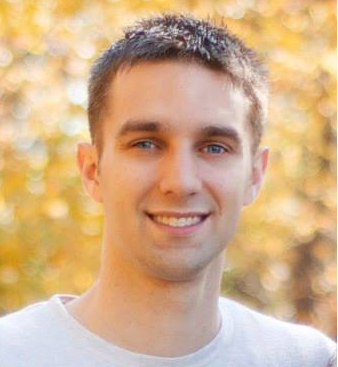
Mark Panaggio ’09 graduated from Hope with a double major in engineering (electrical concentration) and mathematics. Upon graduation, he entered a Ph.D. program in Engineering Sciences and Applied Mathematics at Northwestern University. After completing his Ph.D., he spent six years teaching math as a Visiting Assistant Professor at Rose-Hulman Institute of Technology and an Assistant Professor at Hillsdale College. In 2020, Mark joined the Johns Hopkins University Applied Physics Laboratory (APL) where he works as a data scientist. His work includes both applied analytics and research related to mathematical and statistical modeling and artificial intelligence. He is particularly interested in the health domain and how models can be used for inference, data fusion and forecasting in order to inform decision making. The following are excerpts from a recent correspondence with Mark.
What do you find most exciting or interesting about the work that you do?
At APL, I get to spend my time analyzing data and building models for government sponsors. I enjoy the fact that every day brings new challenges and opportunities to come up with creative solutions to pressing problems. For example, during the pandemic I worked on a model to forecast COVID-19 hospital admissions a couple of weeks in advance in order to give public health officials time to prepare. I find it especially rewarding when I get to see the tools and products we create being used to inform decisions and save lives.
What are some activities you were involved with at Hope that helped shape you as a person?
I had a blast as an undergraduate at Hope. When I wasn’t studying or working in the math lab, I played on the ultimate (Frisbee) team and played on every intramural sports team I could. I also spent three summers working with Dr. Veldman on a project that involved investigating the pressure waves generated by explosives. Being involved in research as an undergraduate was great preparation for graduate school, but more importantly it helped me to realize that I had a passion for research and to appreciate how the concepts I was learning about in class came together in a real-world setting. When I started at Hope, I did not have a clear sense of what I wanted to do when I graduated, but those hands-on experiences helped me figure out what I was really interested in: exploring the computational tools used in engineering and science. Ultimately, this convinced me to pursue graduate studies in applied mathematics and got me started on the path I am on today.
Can you comment on the liberal arts aspect of Hope?
In hindsight, a couple of things about my liberal arts education stand out: 1. Although the technical knowledge from math and science classes is certainly important, being able to write clearly and communicate effectively are just as vital. Although I may not always have enjoyed it at the time, the writing and presentations I did for my general liberal arts classes made me a better teacher and were great preparation for writing papers and giving talks about my research. 2. Developing and clarifying one’s life-view is an essential part of a liberal arts education. I would encourage students to dig deeper into their faith and to seek the truth. At Hope, I was challenged to wrestle with difficult questions about what life is all about, what I believed and why. I left Hope on a firmer foundation and with a clearer sense of purpose than when I arrived.
What advice would you give to current students?
Don’t forget that learning doesn’t stop when you leave the classroom. If you can, get involved in a research project, extracurricular activities, or work as a lab assistant or grader. Often you will find that the time you spend on those activities will be just as valuable as the time you spent in class. Also, get to know your professors outside of class as much as you can! They can be a great resource and there is much you can learn from them even after class is over.

